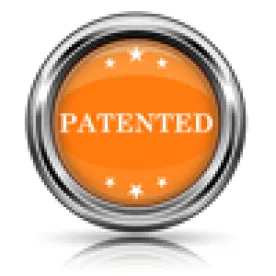Takeaway: Arguments in a petition that a proposed combination of prior art teachings would have been obvious may not be adequately supported where the prior art structures and functions are substantially different.
In its Decision, the Board denied institution of inter partes review of the ‘736 patent and denied Petitioner’s Motion for Joinder as moot. Petitioner had challenged several claims in IPR2014-00191 (the ‘191 IPR), but the Board denied institution of claims 23-25. In the present case, Petitioner again challenged claims 23-25, but the Board found that Petitioner had not established a reasonable likelihood of prevailing with respect to at least one of the challenged claims.
The ‘736 patent relates to “knee implants and knee implant surgery, including implants that can be used in other joints of the human body.” Petitioner challenged claims 23-25 based on Walker and Buechel, and particularly, that claim 25 is anticipated by Walker and claims 23-25 are obvious in view of Walker and Buechel. With respect to claim construction, the Board expressly construed one means-plus-function limitation, giving the term its broadest reasonable interpretation in light of the specification.
Turning to the alleged grounds of unpatentability, the Board first analyzed the asserted anticipation ground. The Board was not persuaded by Petitioner’s arguments that Walker disclosed the means-plus-function limitation construed by the Board. In particular, the Board was not persuaded that the feature relied upon in Walker performed the recited function in the claim, but instead agreed with Patent Owner’s analysis of the reference.
With respect to the asserted ground of obviousness, the Board again agreed with Patent Owner’s arguments and found that Petitioner had not established a reasonable likelihood of prevailing. In particular, the Board found that it would not have been obvious to combine the teachings as alleged in the Petition. As Patent Owner argued, the structures and functions of the prior art were substantially different such that the “obviousness rationale is not supported by adequate articulated reasoning with rational underpinning.” Accordingly, the Board denied institution of the obviousness ground.
The Board finally denied as moot the Motion for Joinder because the instant Petition for review was denied.
Zimmer Holdings, Inc. and Zimmer, Inc. v. Bonutti Skeletal Innovations LLC, IPR2014-01078
Paper 17: Decision Denying Institution of Inter Partes Review and Denial of Motion for Joinder
Dated: October 30, 2014
Patent: 7,837,736 B2
Before: William V. Saindon, Michael R. Zecher, and Richard E. Rice
Written by: Rice
Related Proceedings: Bonutti Skeletal Innovations, LLC v. Zimmer Holdings, Inc., No. 1:12-cv-01107-GMS (D. Del.); IPR2014-00191 (the ’736 patent); IPR2014-00311 (U.S. Patent No. 7,959,635 B1); IPR2014-00321 (U.S. Patent No. 7,806,896 B1); and IPR2014-01080 (U.S. Patent No. 7,806,896 B1)



 />i
/>i
